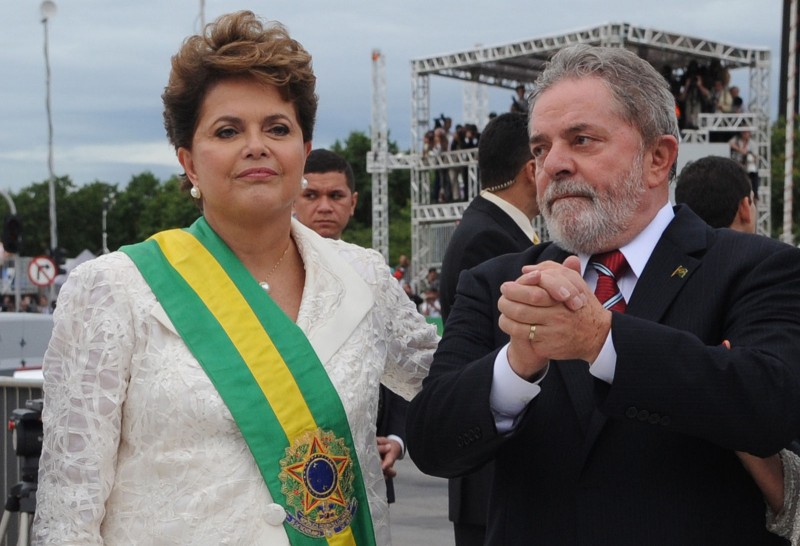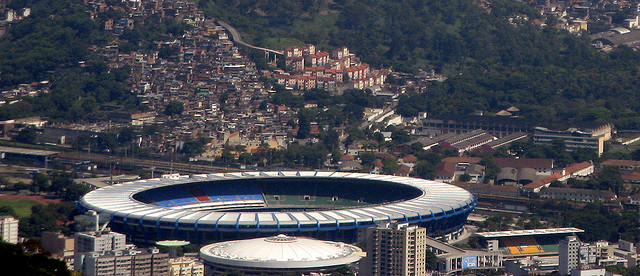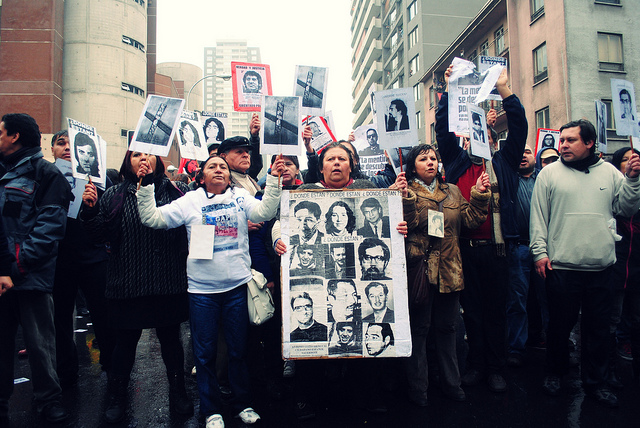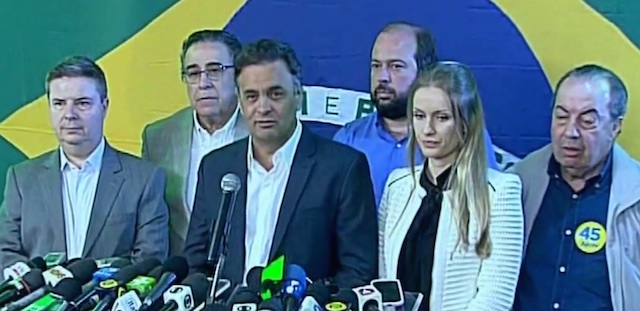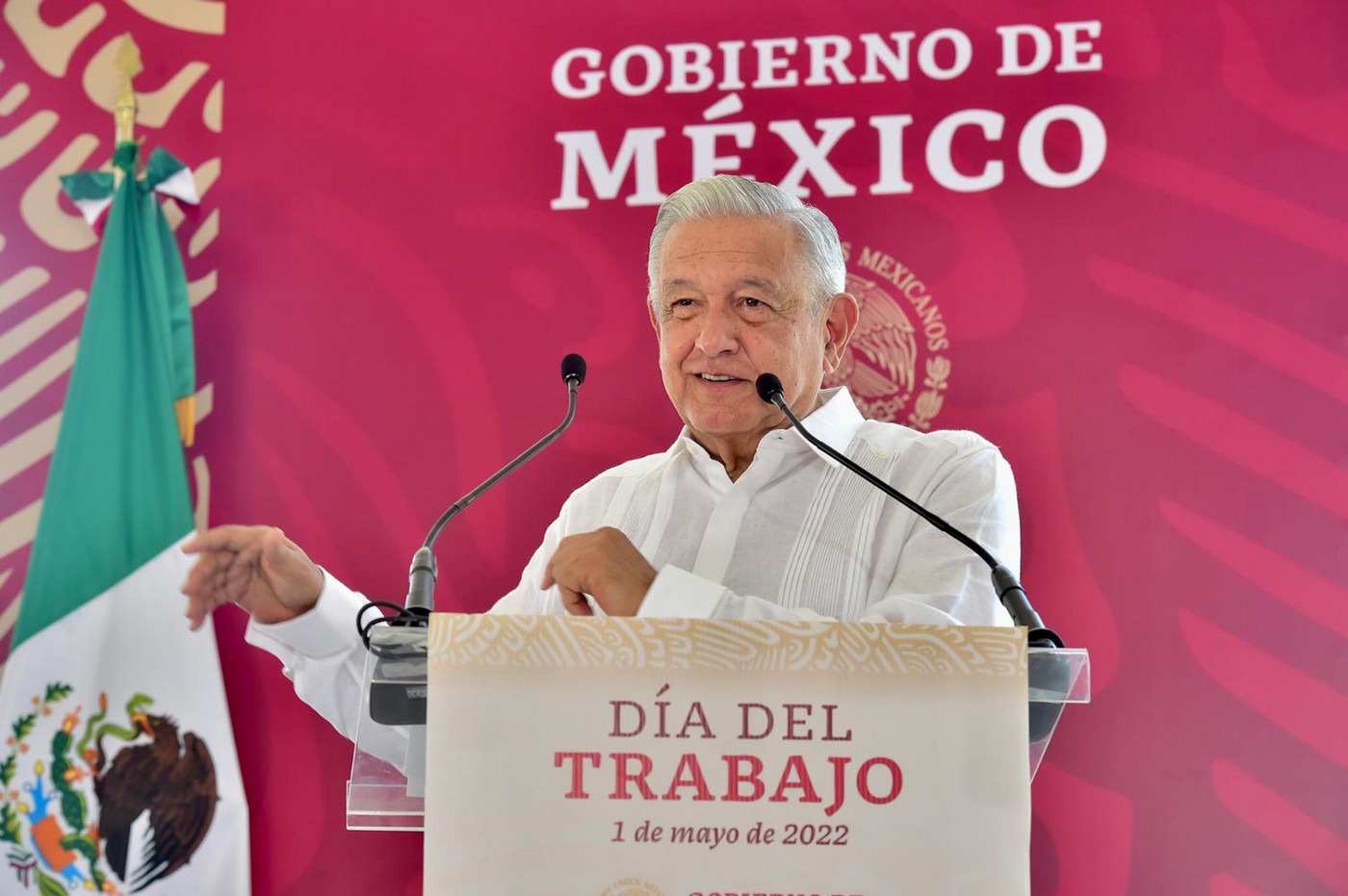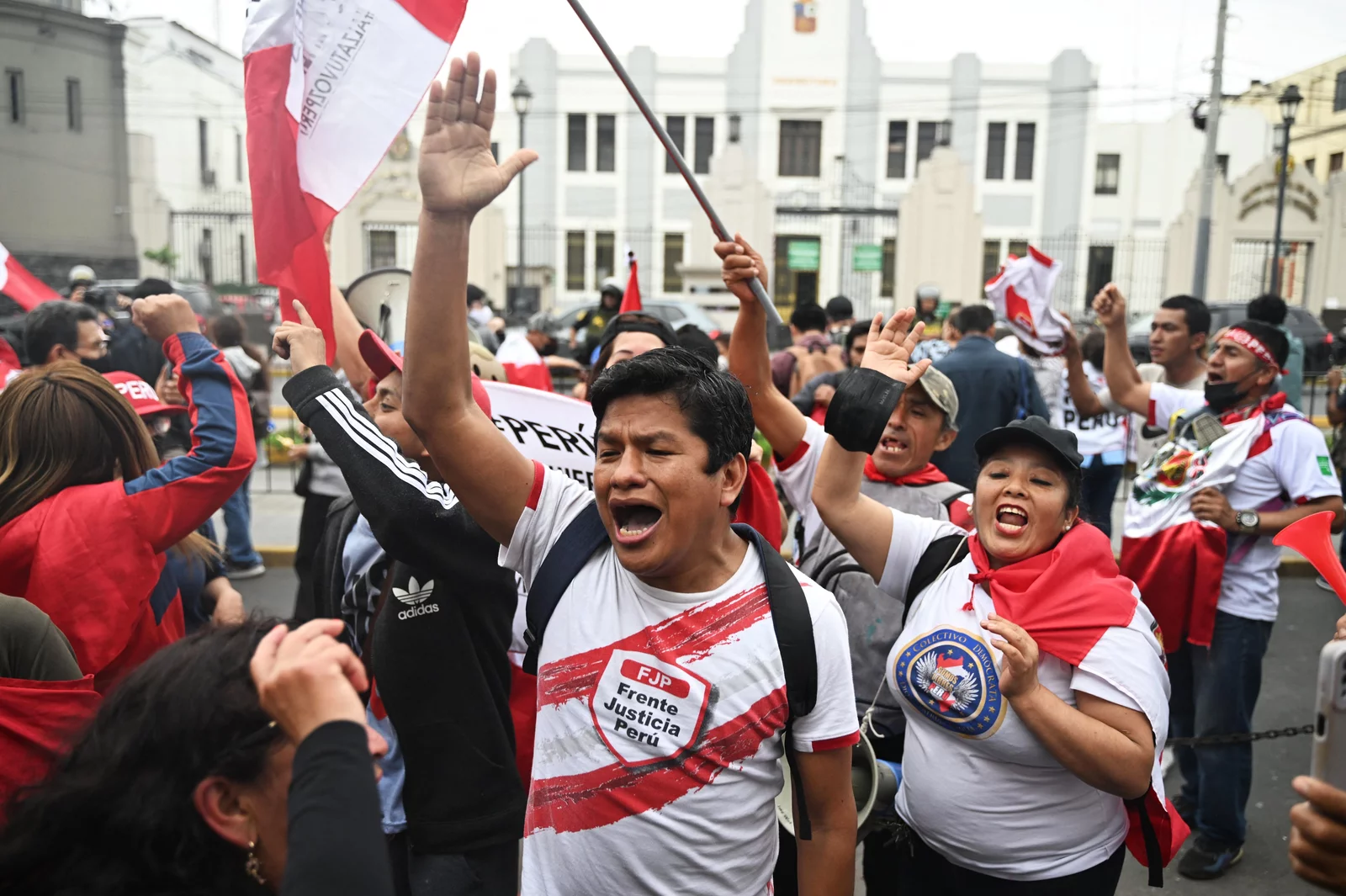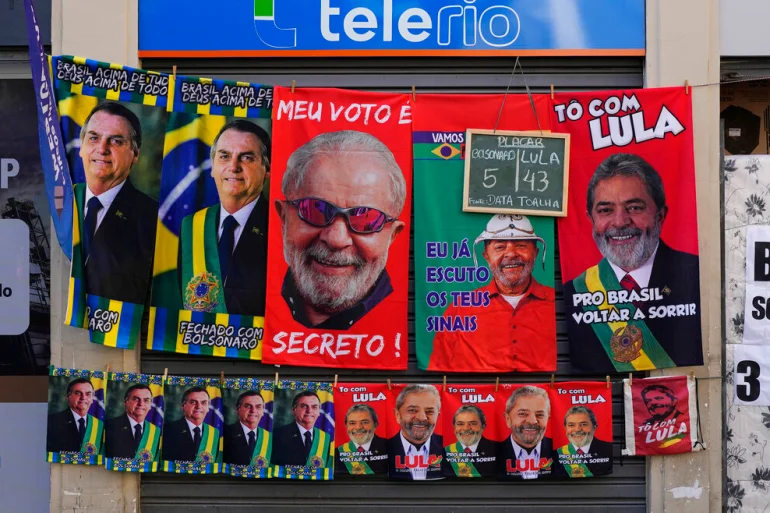
Brazil, Features, Southern Cone
Brazil’s Lula has much to do
December 9, 2022 By EcoAméricas
This story was written by Michael Kepp for EcoAméricas. To view it, click here.
RIO DE JANEIRO — Left-leaning Luiz Inácio Lula da Silva’s presidential-election win last month over far-right incumbent Jair Bolsonaro signaled to the world that Brazil will reverse environmental policies that virtually all experts agree have been causing serious harm.
Now the world is waiting to see whether he can make good on his promises.
Lula, who served two back-to-back presidential terms during 2003-2011, narrowly ousted Bolsonaro in an October runoff by securing 50.9% of the vote. When he takes office on Jan. 1, 2023, he will replace a demagogue who drew scorn abroad by staunchly denying climate change and, through his policies, helping to drive Brazilian Amazon deforestation to its highest levels since 2006.
Lula placed woodland protection at the center of his campaign, promising to halt illegal mining, logging and land-grabbing, safeguard indigenous lands, and spur reforestation. In his platform and Oct. 30 victory speech, he pledged to achieve “net-zero deforestation” throughout Brazil. Addressing delegates at last month’s U.N. Climate Change Conference (COP27) in Sharm el Sheikh, Egypt, he set a 2030 deadline for reaching that goal and proposed that the COP30 talks, scheduled for 2025, be held in the Brazilian Amazon.
“I came here to say Brazil is back, back to reconnect with the world,” Lula declared in a Nov. 16 speech to COP27 delegates, prompting thunderous applause. He also told delegates: “There is no world climate security if the Amazon isn’t protected.”
The path outlined by Brazil’s president-elect couldn’t have contrasted more starkly with the one taken by his predecessor. By stifling environmental funding, regulations and enforcement, Bolsonaro presided over a period of relentless Amazon-woodland destruction at the hands of illegal loggers, gold miners and land grabbers. Deforestation in the region increased 73% in the three years starting on July 31, 2018—five months before Bolsonaro took office—and ending on July 31, 2021, 17 months before he is due to step down. Definitive figures for the 12 months ending on July 31, 2022 are not yet available, but preliminary reports indicate they will show Brazilian Amazon deforestation at record levels.
Environmental policy rarely plays a central role in Brazilian elections, but this time it did.
“Lula is expected to be as, if not more, environmentally progressive than he was during his first eight years in power, as opposed to Bolsonaro, who believed the environment needed to be exploited not protected, to drive economic growth,” says Carlos Bocuhy, president of the nonprofit Brazilian Environmental Protection Institute (Proam). “So Lula’s election comes as a welcome relief, not just to environmentalists like me, but to a huge swath of Brazilian society that is also concerned about protecting the Amazon and other biomes here, and about helping to mitigate climate change.”
But Lula will face strong political headwinds. That’s because in October’s legislative elections, Brazil’s two houses of Congress, already right-leaning, shifted further rightward—a reflection of the continuing influence of religious conservatism and center-right agribusiness interests.
“Lula will be faced with an even more right-wing federal legislature that is intent on passing environmentally regressive bills that Bolsonaro either sent to Congress or supports,” Bocuhy says. “It is a governing body with little appetite for any bill Lula might send that bolsters environmental public policy.”
Lula can reverse some of his predecessor’s actions by executive action. For instance, experts believe he will annul a Bolsonaro decree that paralyzed the country’s main environmental-policy body—the multi-stakeholder National Environmental Council (Conama). Some green advocates worry that because Lula, not unlike Bolsonaro, has favored the construction of dams and other large-scale Amazon infrastructure as a means of economic development, he might push environmentally damaging projects there. But others argue he will be more cautious this time around, chastened by environmental fallout from some projects licensed during his previous presidency—most notably Belo Monte, a huge Amazon-region hydroelectric dam.
What most observers do feel they can forecast confidently, based on past experience, is that Lula will move quickly to address illegal deforestation. When he previously served as president, he created numerous federally protected areas in the Amazon and spearheaded a US$136 million woodland-protection program that cut the rate of Brazilian Amazon deforestation by 83% between from 2004 to 2012.
Some forecast that he will have to be even more aggressive this time because the problem of criminal gangs engaged in destructive activities in the region has grown significantly worse than it was during his previous administration. (See Q&A—this issue.)
Lula’s woodland-conservation efforts are expected to focus mainly on the southern Amazon, where the most extensive deforestation has occurred. There, experts say, the forest is nearing a “tipping point” stage in which declining rainfall caused partly by land clearing will cause 50% to 60% of the rainforest to become dry savanna. Carlos Nobre, a Brazilian climate-change expert who has conducted extensive tipping-point research, expects the new government to combine rigorous environmental enforcement with aggressive tree-planting aimed at restoring deforested and degraded areas, mainly in the Amazon. Says Nobre: “Lula’s transition team knows reforestation is needed to help him keep his promise of net-zero deforestation.”
Nobre believes other woodland-protection elements being considered include incentives for agroforestry and more intensive use of cropland to increase yields and thus reduce the need for Amazon land clearing—a key step in achieving net-zero deforestation. (See related story—this issue.) At COP27, Lula mentioned agroforestry as part of his pledge to promote “regenerative and sustainable agriculture.”
“Lula realizes that if Amazon farmers and ranchers, few of whom adopt such sustainable land-management practices, are provided with the economic incentives to do so, these so-called ‘carrots,’ will reduce their need to clear more forested land,” Nobre says. “He has also advocated for more government investment in bio-technological innovation to add value to forest products. For example, investments for processing acaí berries [palm fruit used to make slushies and desserts] and exporting the processed pulp would create far more robust income for Amazon communities that now collect and sell those berries here and abroad.”
Experts also anticipate Lula will complement woodland-conservation efforts by creating new federal protected areas and indigenous reserves, as he did during his first stint as president. Bolsonaro established no such areas during his four-year term, dismissing them as impediments to Amazon economic development and halting all indigenous-reserve projects nearing completion when he took office.
Woodland-protection progress could bring Brazil immediate economic benefit, most notably by reviving an agriculture commodity deal the European Union reached with the Mercosur trading bloc—Brazil, Argentina, Paraguay and Uruguay—in 2019 after 20 years of talks.
Finalization of the deal was blocked in 2020, largely over European concern that the agreement might intensify land grabs and deforestation in the Amazon given Brazil’s lax forest-protection enforcement. While many environmentalists worry the deal doesn’t include adequate forest safeguards, some believe changes could be made to fortify it in that respect.
Lula has also promised to rejuvenate Brazilian climate-protection efforts—in part by creating a ministerial body called the National Climate Authority (ANC). Analysts expect the ANC to lead efforts to strengthen Brazil’s nationally determined contributions (NDCs), the voluntary greenhouse-gas-reduction targets that countries around the world have set under the 2015 Paris Agreement. The Bolsonaro administration updated its NDCs twice, in 2020 and in 2022, employing accounting tricks that effectively weakened them.
Lula’s efforts to finance woodland protection will be constrained by a 2023 federal budget already approved by Congress and by limitations stemming from the twin problems of inflation and slow growth. Additional funds for environmental protection could materialize, however, if he succeeds in renegotiating 2023 federal spending limits.
Whether or not that effort pans out, he will need substantial foreign capital for his forest program, part of which is expected from Norway and, to a lesser extent, Germany. Those two countries have provided nearly all the money for the US$1.3 billion Amazon Fund, a major woodland-protection resource administered by Brazil’s National Development Bank (BNDES). The fund’s payments for projects are based on Brazil’s verified progress in reducing its Amazon deforestation.
In August of 2019, Norway and Germany halted their contributions to the Amazon Fund. In doing so, Norway cited the rise in deforestation under Bolsonaro and his administration’s unilateral abolition in April of that year of two multi-stakeholder bodies that Brazil, Norway and Germany had created in 2008 to oversee Amazon Fund spending.
But on Oct. 31, the day after Lula was elected president, Norway signaled that during the presidential-transition period it would make some US$500 million in contributions that had been suspended. On Nov. 2, Germany said it was ready to resume contributions as well.
A Nov. 3 Brazilian Supreme Court decision improved the funding picture further. The court ruled that the abolition of the two Amazon Fund oversight bodies—the Amazon Fund Steering Committee (COFA) and the Amazon Fund Technical Committee (CTFA)—had been unconstitutional. It ordered that fund operations, paralyzed since the 2019 government action, resume within 60 days. This will free up R$3.5 billion (US$650 million) that Norway and Germany had already given to the Amazon Fund but whose disbursement had been frozen since the two oversight bodies were abolished.
Brazil also is expected to access US$94 million earmarked for environmental-services payments under a native-forest protection and restoration program targeting the Amazon region. The program, Floresta+, is being underwritten by the UN-backed Green Climate Fund (GCF), a global financing mechanism used by developing countries to address climate change.
At COP27, Lula met with world leaders and foreign climate officials, among them U.S. climate envoy John Kerry, in search of additional funds Brazil needs to meet its NDC commitments. Like many developing-nation leaders at the talks, he faulted developed countries for failing to deliver promised support for their climate adaptation and mitigation efforts.
In gauging Brazil’s progress, nations that provide climate funding are likely to track more than the Lula administration’s forest-conservation progress. They also will likely keep tabs on the impact of Amazon infrastructure development. Analysts expect Lula to be far more selective than Bolsonaro was in promoting such projects, even though the bulk of Bolsonaro’s favored infrastructure plans ultimately did not make it past the drawing board.
The previous Lula administration’s 2010 licensing of the US$12 billion, 11,233-megawatt Belo Monte dam in the eastern Amazon state of Pará remains a cautionary tale on that score. Six years after it came online, the dam is operating at only 40% of its installed capacity due largely to declining rainfall and reservoir levels. And a channel diversion undertaken as part of the project has decreased water flows and fish stocks for indigenous communities along a 100-kilometer (62-mile) stretch of the Xingu River.
Grain railway pending
A potentially controversial Amazon-infrastructure decision awaiting the Lula team is whether to grant an environmental license for a planned 933-km (578-mile) grain railway intended to carry soybeans from Mato Grosso state to a Tapajós River port in Pará state. Called the Ferrogrão, the project would enable barge shipment of the soybeans down the Tapajós to two deepwater ports at the mouth of the Amazon River. From there, oceangoing vessels would carry the grain to foreign markets—mainly that of China, the biggest buyer of Brazilian soy.
Lula called in his campaign for “modernizing and increasing transport logistic infrastructure” in the Amazon. His running mate, Vice-President-Elect Geraldo Alckmin, said in October that “the Ferrogrão would integrate the various ways in which Mato Grosso state could grow and become stronger.”
Such talk alarms environmentalists and indigenous communities. They argue the Ferrogrão would spur large-scale settlement and land clearing of the kind that occurred with construction of the northern portion of the BR-163 highway, which was extended to allow Mato Grosso soy to be trucked to Tapajós River ports. For their part, however, soy traders argue that BR-163 is so overburdened with grain-truck traffic that the Ferrogrão is essential.
“The Ferrogrão is the most likely large-scale Amazon infrastructure project that the Lula government could approve,” says Claudio de Oliveira, advisor for GT Infrastructure, a Brazilian network of 54 socio-environmental nonprofits organizations.
Lula’s administration is unlikely to push new Amazon road upgrades like the BR-163 project, which was licensed during his last stint as president, given how such projects have become conduits for migration and illegal clearing of rainforest land, analysts say. But it might license the repaving and repair of a 254-kilometer (158-mile) “middle” stretch of the 819-km (508-mile) BR-319 highway, which was built in the 1970s to ease wet-season transport between two western Amazon state capitals—Porto Velho and Manaus.
“When campaigning in Manaus this year, Lula talked favorably about the need to repave this middle stretch of BR-319,” says Philip Fearnside, senior researcher in Amazon ecology at the National Institute of Amazon Research (INPA) in Manaus. “If he does so, it would further open the areas on either side of the highway to settlement and illegal deforestation, which is what happened with BR-163, even after federal protected areas were created all along the highway.”
‘Pre-salt’ deposits
Also likely to draw scrutiny will be further development of so-called “pre-salt” oil reserves found far offshore, deep beneath layers of rock and salt. Brazil’s state oil company Petrobras discovered pre-salt deposits in 2006, during Lula’s first term, and began tapping them in 2008. Petrobras’s 77 pre-salt wells by 2018 had allowed it to triple its oil production, become a major global oil producer and greatly increase government revenues.
“It is necessary to expand the capacity to produce refined oil products in Brazil, taking advantage of the great wealth of the pre-salt [deposits],” Lula’s platform says.
Environmentalists hope that despite such pledges, Lula will significantly expand investment in renewable energy sources such as wind, solar, green hydrogen and biofuels, all of which he mentioned in Egypt while advocating an “energy transition.”
“Civil society will pressure Lula to speed the transition from fossil fuels to renewable energy, especially wind and solar power, even though he has not made his intentions regarding energy diversification clear,” says Mariana Mota, public policy coordinator for Greenpeace in Brazil. “But we believe he is open to dialogue.”
About EcoAméricas
EcoAméricas provides objective coverage of Latin American environmental issues and trends for an international audience of academic institutions, environmental organizations, businesses and government agencies.
